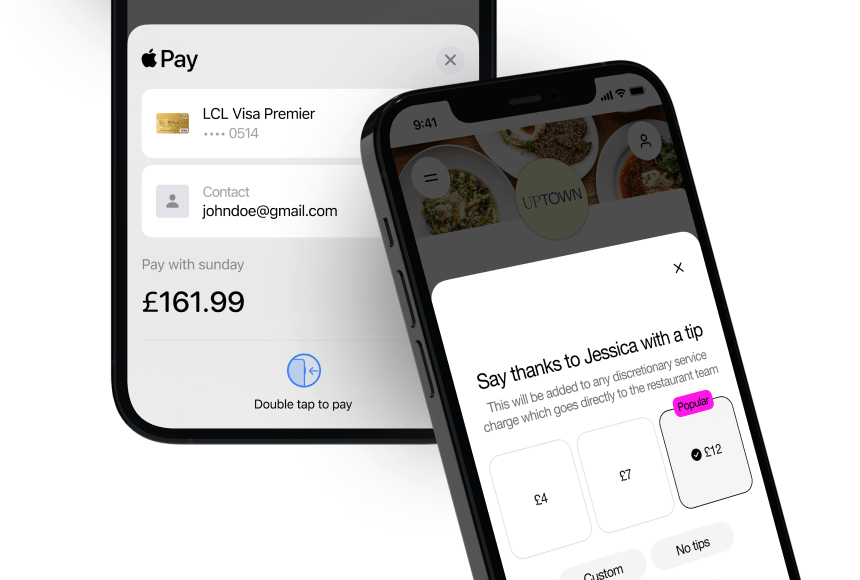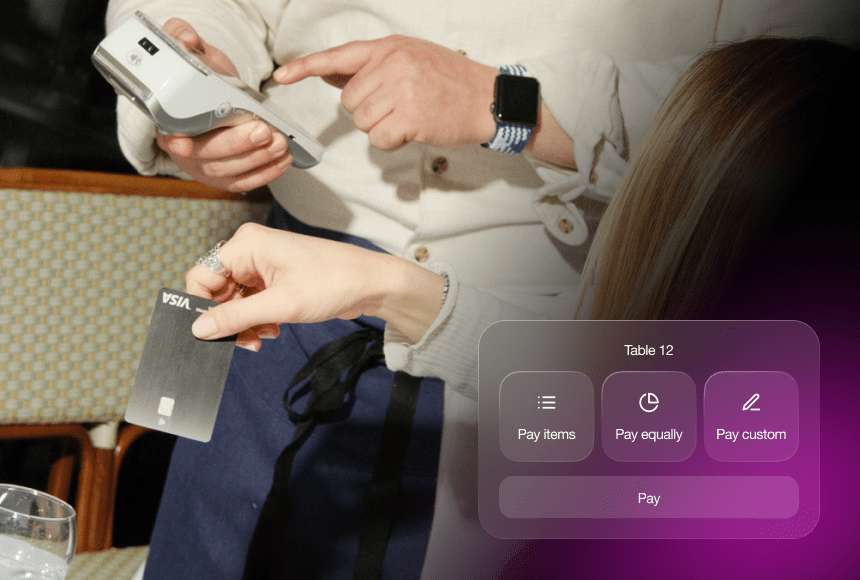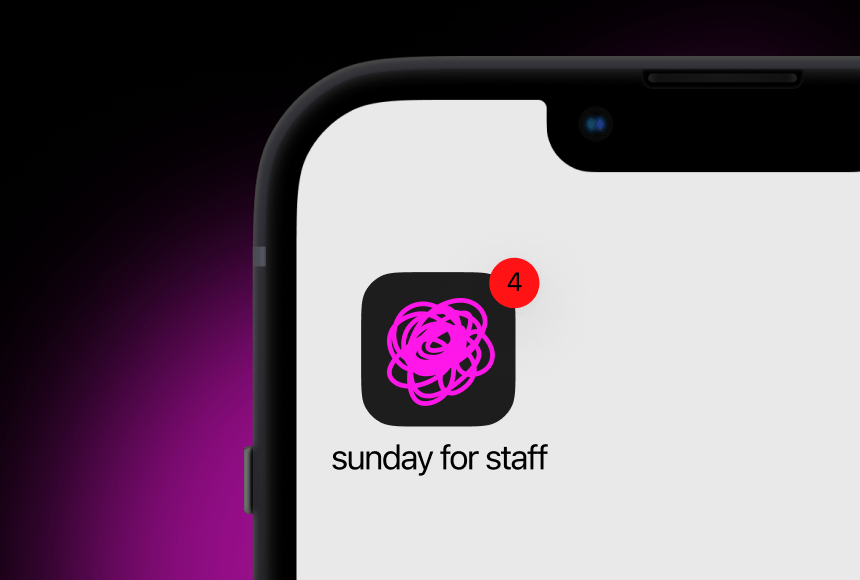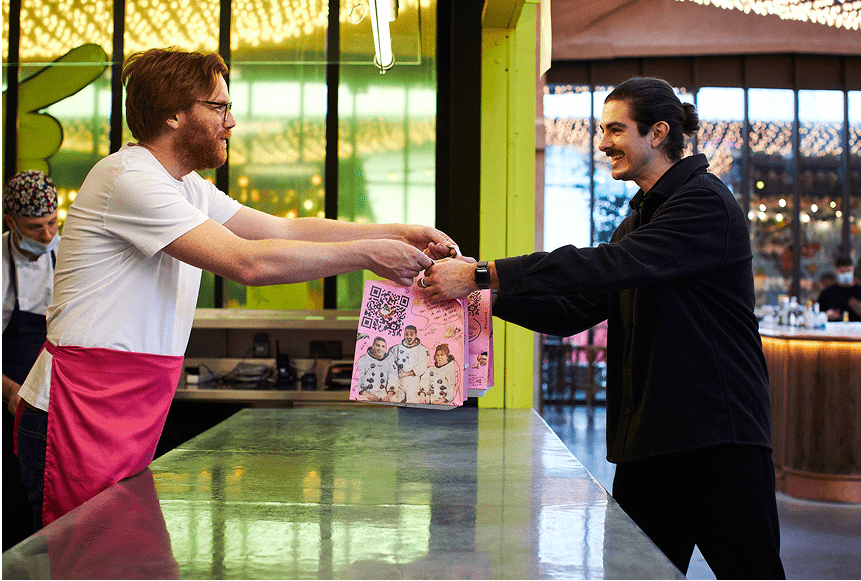
Exploring the Realities of Digital Tips in the UK Restaurant Scene
Why Digital Tips Matter More Than Ever
In the UK’s vibrant dining culture, there’s something altogether special about tipping. It’s a way for guests to show appreciation to the staff who crafted their culinary experience—from the baristas mastering latte art to the waiting team ensuring a seamless meal. Over the past few years, tipping has gone increasingly digital, with new platforms, card terminals, QR code payments, and even mobile apps vying for attention.
But this shift is not simply about convenience. It reflects a broader change in how people handle money and display gratitude. Cash tips are less common now, replaced by contactless gestures made through smartphones or at the point of payment. Yet not all diners feel comfortable with digital tipping. Some find the technology intrusive or worry about whether their gratuities go directly to the hard-working staff. Others love the simplicity of tapping a few extra pounds into an app.
The landscape of tipping is undergoing a shift, and as a restaurant owner, you’re in the thick of it. Embracing innovative ways to accept tips can boost your bottom line and keep your team motivated. But overstep or misjudge customer preferences, and you risk alienating guests. The question is: how do you get the balance right while staying ahead of the curve?
Changing Habits: How British Diners Approach Tipping
Let’s start with a snapshot of how tipping culture in the UK has evolved. According to a
recent report on consumer spending, contactless payments have soared, largely due to convenience and hygiene considerations. Many consumers now carry less cash, which means they’re also less likely to place loose change on the table for a tip. Instead, they look for an easy, digital way to reward good service.
Modern British diners can be described as:
- Practical: They appreciate frictionless ways to pay.
- Environmentally aware: They often prefer a paperless, cashless approach.
- Curious but cautious: They’ll experiment with new technologies but want transparency around fees and distribution of tips.
A restaurant in Manchester might observe that roughly half of its guests opt for a digital tip when paying by card. Meanwhile, a boutique café in Brighton might find that only a quarter of their patrons use the QR code tip function on the receipt. Preferences fluctuate widely based on factors like location, target clientele, and even seasonal tourism. However, the broader trend is that diners increasingly expect a convenient, digital tipping option to be available—especially when cash flow in wallets dwindles.
What Digital Tipping Options Do Diners Embrace?
Let’s decode the digital tipping approaches that UK diners seem to appreciate—and those they tend to shun.
1. QR Code Tipping
QR codes have surged in popularity. Whether to browse a menu or settle the bill, diners find them fast and simple. With a quick smartphone scan, guests can choose a tip amount—no fiddling with notes or coins.
Diners generally like QR code tipping because:
- It requires minimal effort.
- They can remain in control of the amount without feeling pressure from a suggestion on a screen.
- The process can be completed at their own pace, often after staff have stepped away.
However, some customers may worry about their personal data usage or resent the feeling of being nudged into leaving a tip. That’s why clarity is crucial. If your payment interface clearly states how and where the tip will be used, invite them to leave feedback, and keep the experience user-friendly, you’ll usually find positive adoption.
2. Tip-Prompt Screens on Card Terminals
Picture this: a diner completes their meal, the server brings over the card reader, and a question pops up—“Would you like to add a tip?” Some devices even offer preset percentages or pound amounts.
UK diners are steadily getting used to this approach. They know it’s standard across many eateries, from high-end bistros to local pubs. However, a few guests still find it disconcerting if the device’s prompt is too pushy or defaults to a higher percentage than they’d expect.
Here’s how you can handle tip-prompt screens to keep diners comfortable:
- Offer modest preset amounts or percentages (e.g., 10%, 12.5%, or 15%).
- Always include a “custom” option for the guest to decide on their own figure.
- Reassure them that tipping is optional—no guilt attached.
A positive side-effect is that staff often feel more confident about receiving tips when the system gently encourages it. Still, it’s essential to ensure diners don’t perceive it as an upsell strategy.
3. App-Based Payment and Tipping
Some restaurants partner with dedicated apps that store payment details and allow customers to settle the bill and leave a tip with a few taps. For instance, a guest might open the app, confirm their order, and choose their gratuity.
Diners accept these app-based solutions when:
- They already trust the app brand (for instance, if it’s widely used locally).
- The interface is smooth, the tip process is obvious, and it’s easy to confirm final amounts.
- They can bypass queues or waiting times to pay.
Nonetheless, some people are put off by the need to download an app they might not use regularly, or they fear spam notifications. Balancing the convenience factor against app fatigue is key. If you do use an app-based system, showcasing its benefits—like contactless, quick payment or a built-in loyalty scheme—can make tipping through it feel natural instead of burdensome.
What Makes Diners Uncomfortable About Digital Tipping?
Not everyone is thrilled about digital tipping. Some diners harbour genuine doubts, either from practical concerns or emotional hesitation. When adopting new payment solutions, it helps to address these points head-on, so your guests feel comfortable and respected.
Fear of Hidden Fees
One of the biggest concerns is whether the tip will be reduced by processing fees. For instance, if a customer leaves a £5 tip via card or app, do you, as the restaurant owner, pay transaction fees on that amount, effectively reducing what’s passed on to staff? This can lead to mistrust if not handled transparently.
According to a survey by the British Hospitality Association, many diners want guarantees that 100% of what they tip ends up in the hands of those who served them. If part of the tip is used to cover administrative costs, diners might feel cheated or less inclined to leave a tip altogether.
Pressure from On-Screen Prompts
Few guests like being asked, right in front of the server, to tip. It puts them in an awkward spot because refusal can feel uncomfortable. While staff deserve to be compensated, a prompt that’s too forceful can lead to negative feelings.
Rather than confrontation, many guests want a discreet, stress-free method. The solution is to design or adopt a tipping interface that allows the diner privacy. For instance, the staff could hand them a wireless card reader and step away, letting them make decisions in peace. Or offer a QR code at the table so they can perform the tip action without anyone looking over their shoulder.
Lack of Control Over Where Tips Go
Some diners assume that digital tips don’t go directly to the individual staff who provided the service—that they vanish into the restaurant’s bank account. While many establishments have fair distribution policies, such as a tronc system, this isn’t always communicated clearly.
Customers are more inclined to leave a tip digitally if they know exactly how it’s split among employees. If possible, share a quick note about your tipping policy. Reassure folks that their gratuity will benefit the waiting staff, kitchen team, or perhaps everyone under an even distribution model.
Best Practices to Encourage (and Not Alienate) Diners
Let’s bite into the meaty part of the conversation: as a restaurant owner, how do you encourage digital tips without overstepping your diners’ comfort zones?
1. Emphasise Transparency
Be upfront about your tipping policies. Let diners know if there are any card-processing fees, how tips are shared (or who decides the distribution), and that tipping is optional—though appreciated. You could print a note on your menu or subtly mention it at the end of the meal.
A straightforward statement often puts people at ease: “All card tips go straight to our wonderful staff. There are no hidden deductions.” If some portion of the tip must cover transaction costs, explain why. People generally understand the need to cover overheads, as long as they feel the policy is honest.
2. Offer Multiple Methods
Customers have varying preferences. Some love paying by phone. Others trust the classic card reader prompts. A few remain loyal to the tradition of leaving coins on the table. If you can accommodate them all, you’ll please a broader swathe of diners.
For example:
- Print a QR code on the bill that links to a secure tipping page.
- Enable tips on your card terminal with a polite, unobtrusive prompt.
- Provide an easy way for those who still want to use cash.
Restaurateurs who implement multiple options often see an overall rise in gratuities, since each guest can tip through the channel they find most convenient.
3. Train Your Staff to Feel Confident, Not Pushy
One of the subtle arts in hospitality is knowing how to broach the topic of tipping. Staff should be informed about how the system works so they can answer queries: “Do you get the full amount?” “How do I tip if I’m paying by phone?”
Encourage waitstaff to present the payment device or receipt courteously and step away. This gives diners the privacy to decide without feeling stared at. A warm smile and a simple “Thank you so much for dining with us today!” can reinforce a positive vibe. Nobody wants to feel forced into leaving a tip.
4. Make It an Extension of Your Brand Experience
Digital tipping shouldn’t feel like an afterthought. If your restaurant has a laser focus on local sourcing, for example, you might highlight how tips help fund barista training or pastry chef workshops, showcasing how staff development aligns with your brand values.
If sustainability is your calling card, incorporate a note about going paperless and how digital tipping is part of that eco-friendly mission. Align the payment and tipping process with the rest of your branding, so it feels seamless and consistent with what diners already love about your establishment.
Case Study: The Starling Pub & Kitchen
Imagine a mid-range pub & kitchen in Bath, known for its cosy atmosphere and small plates. The owner, Harriet, decided to implement a digital tipping strategy last summer. She introduced:
- A discreet tip prompt on the card reader that suggests 10%, 12.5%, or a custom amount.
- A printed QR code on each receipt that leads customers to an online portal for tipping and leaving feedback.
- A short note on the menu explaining that digital tips go directly to the staff, minus a minimal processing fee of 1%. (They chose to be open about it.)
Over six months, Harriet observed a 15% increase in total tips, which significantly boosted staff morale. Diners appreciated the clarity—complaints about where tips end up fell away. One frequent guest even wrote, “I love that I can just scan the code after finishing my dessert, add a tip digitally, and leave an online rating at the same time!”
The key takeaway for Harriet was that you don’t have to push people into using digital tips. By making each step transparent and convenient, you set the table for them to choose how they show gratitude.
Addressing the Hot Topic: Can Service Charges Replace Voluntary Tips?
The service charge debate has been swirling around the UK hospitality industry for years. Some restaurants add a mandatory service charge (often 12.5%) to each bill, especially in London. Others keep tipping strictly voluntary. Where do digital tips fit into this equation?
In short, they can coexist. A standard service charge might cover basic staff wages or operational overheads, while any additional digital tip remains an optional gesture of generosity. However, confusion arises when customers don’t know the difference between the service charge and a tip.
If you adopt both a service charge and a digital tip option, be exceedingly clear:
- Explain on the menu or bill what the service charge includes and whether staff see it.
- Show that an extra “thank you” is at the diner’s discretion; it is not compulsory.
Of course, some restaurants prefer not to add a service charge, relying instead on a culture of voluntary tipping. Whichever route you take, transparency remains the crucial ingredient in your recipe for diner trust.
How to Communicate Digital Tipping Policies
We’ve touched on the theme of transparency more than once—because it’s a big deal. Let’s explore how to convey your policy clearly without overshadowing the dining experience.
Use Simple Language
Skip the jargon. Terms like “gratuity distribution system” or “comprehensive tip pooling policy” can sound cold or complex. A friendly line on the menu—“All digital tips go straight to our staff, used to support their well-being and continued training”—feels more human and fosters a sense of connection.
Make It Visible, Not Overbearing
Overloading diners with signage about tipping can be counterproductive. A gentle mention on your physical or digital menu (in large enough font to grab the eye but not overwhelm) usually suffices.
If you have a website, it could include a brief FAQ about your tipping policy. Or, if you use table tents, a small panel can clarify how digital payments and tips work. The aim is to inform without making customers feel bombarded.
Invite Feedback
One underrated approach is simply asking diners for their thoughts: “What did you think of our digital tipping system today?” Encourage constructive comments and adapt where necessary. If you maintain an active social media presence, you can even run short polls or Q&A sessions.
Such engagement signals that you care about the diner’s experience. This two-way street can yield insights you may never have considered, like design tweaks to your QR code or best practices for staff presenting the payment device.
The Bigger Picture: Motivating Your Team
Digital tipping is about more than just money. It cultivates morale and recognition. Working in a busy kitchen or front of house can be stressful. A healthy flow of tips—collected fairly—can help employees feel seen and appreciated.
Many restaurants distribute tips on a points-based system that rewards staff equitably. If someone works extra hours or takes on more responsibilities, they receive a proportionate share. By being transparent and consistent about how those digital tips get dispersed, you create a collaborative environment where team members help each other succeed.
If you want to incentivise digital tipping further, consider acknowledging top earners or distributing small perks—like a team dinner or advanced training opportunities. Rewarding staff for their hard work ties neatly into your overall business goals: happier staff, happier diners.
Where Does sunday Fit In?
At the heart of it, digital tips should be user-friendly, transparent, and accessible. That’s exactly what sunday helps restaurants achieve. By incorporating a fast, QR-based payment system, you give customers the freedom to settle the bill at their leisure and add a tip on their own terms.
Beyond payment, sunday also encourages guests to share feedback and even post a Google review. That means you’re not only boosting your staff’s earnings but also improving your online reputation. Pair that with the simplicity of the setup—everything fits seamlessly with your existing operations—and you’ve got a recipe for a harmonious, tip-friendly environment.
Room for Innovation: The Future of Tipping
As digital wallets evolve and contactless payment limits keep rising, restaurants may see new technologies for capturing tips—such as face recognition payments or instant staff payout features. The question isn’t whether these changes will come, but how quickly they’ll become mainstream.
Some experts predict that within a few years, more than half of UK restaurants will adopt payment platforms that automate tip calculations, distribute tips in real time, and store data for easy payroll reporting. Others foresee a future where personalized tipping suggestions match each diner’s order history or loyalty level.
No matter the specifics, adaptability remains crucial. Embracing fresh solutions allows you to meet modern diners where they are—digitally—and keep your operation running smoothly.
Frequently Asked Questions About Digital Tipping
Does going digital mean fewer cash tips?
Not necessarily. Cash is still popular with some demographics, so in most cases, you’ll receive both cash and digital tips. However, as more people use cards or mobile payments only, introducing digital tipping options can potentially increase overall gratuities.
Are there legal requirements for how I distribute tips to staff?
The UK government has introduced legislation to ensure fair tipping practices, including a ban on employers taking tips from their workers. While it’s your responsibility to comply, the details can vary. Consider consulting a legal expert or official government guidance to ensure your policy meets current regulations.
How can I reassure diners that staff receive their tips?
Transparency is the most effective method. Display or communicate that 100% of tips go to your team (or clarify any minimal processing fees). If you use a tronc system or a similar structure, provide a simple explanation. Reassure diners that every pound they tip helps support your staff.
What if I’m worried about transaction fees eating into tips?
Some restaurants choose to absorb processing fees; others deduct a small percentage from the tip. The key is to be honest—let guests and staff know if fees apply. Many diners accept minimal fees if the system is upfront, and they often view it as part of running a modern business.
A Fresh Perspective on Gratuities
Digital tipping is here to stay, but the true success of any tip system lies in how it’s communicated, presented, and handled once it arrives in your bank account. Taking the time to refine these steps can create a win-win situation: diners get an effortless, transparent way to show their appreciation, and your staff benefit from a fair, modern approach to gratuities.
As the UK culinary landscape grows ever more inventive, so do payment methods. Trust, honesty, and user-friendly technology will guide you through the next wave of tipping trends—allowing you to enhance not only your revenue but also the sense of satisfaction and camaraderie among the team who make your restaurant a must-visit destination.
Find out more today
Drop us your details below and we’ll reach out within the next 24
More tips means a better service.
3X more tips mean 3X better guest-experience, and 3X better staff-retention.




